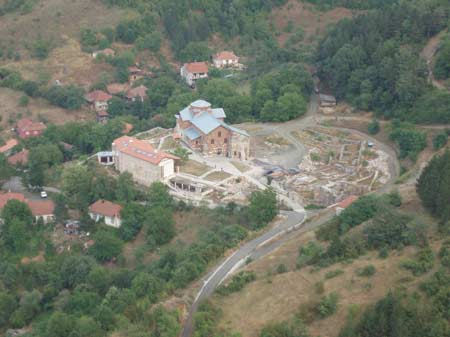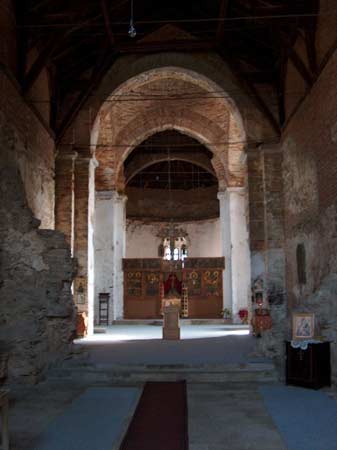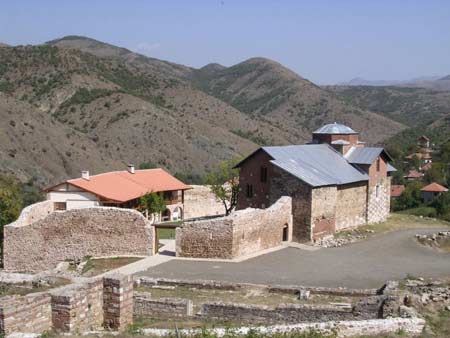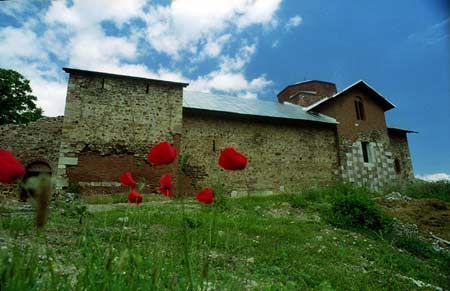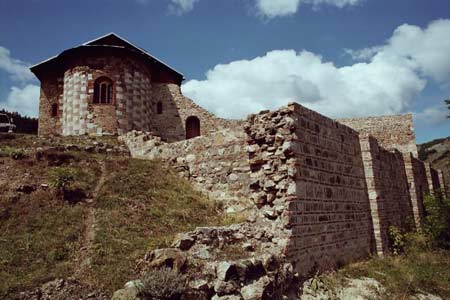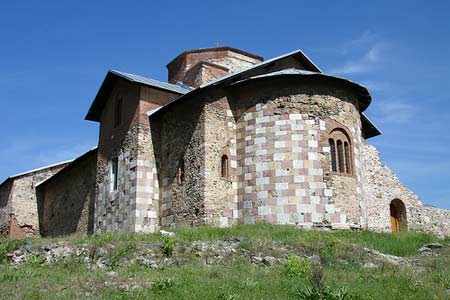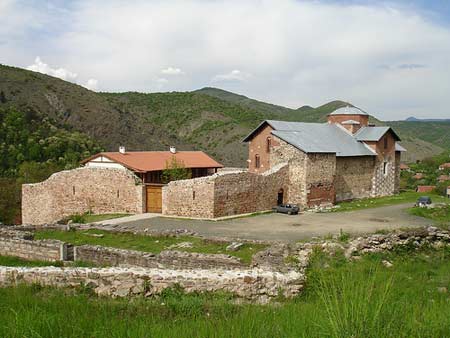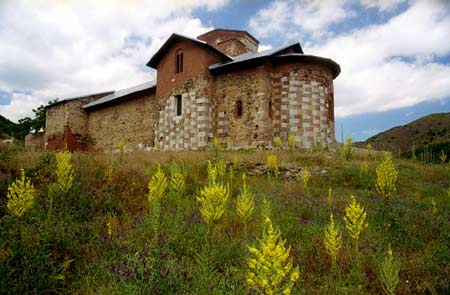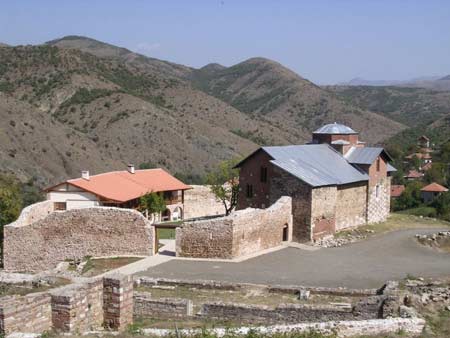Monastery Banjska - Манастир Бањска
Banjska Monastery is located near the present day village of Banjska in Zvecan municipality, north of Kosovska Mitrovica. Banjska is the pious endowment of the Holy Serbian King Milutin, who had it built during the period from 1312 to 1316. After his death the King's holy relics were preserved in the church of Banjska Monastery. Because it was a royal sepulcher, this church was far more richly decorated than the other 40 odd pious endowments built by Milutin.
The monastery church dedicated to the Holy Archdeacon Stefan was built in the same location where the seat of the Banjska diocese existed in the 13th century, during the rule of Milutin's father, King Uros I. During Milutin's reign the monastery was restored and became the fourth most important monastery in the Serbian Archdiocese. After receiving the blessing of Archbishop Sava III (1309-1316) and his mother, Queen Jelena, Milutin entrusted the building of the shrine to his spiritual father, Abbot Danilo (who was later appointed archbishop), who arrived from Chilander at this time. When the Holy King Milutin passed away in his summer palace in Nerodimlje (near Urosevac) in the year 1321, Archbishop Danilo II (1324-1337) transferred his body to Banjska where he was buried with full royal honors. Queen Theodora, the mother of the Emperor Dusan, was later buried in the northern chapel of the church. After the Battle of Kosovo in 1389 the monks transferred the relics of King Milutin to Trepca; later, in 1445, they were transferred to Sofia, Bulgaria, where they still rest today in the church of St. Alexander Nevsky.
During the 17th century the Turks transformed the church of the already dilapidated Banjska Monastery into a mosque. The monastery suffered great destruction in 1689 when the Turkish and Austrian armies alternately used it as a fortress during the course of the Austrian-Turkish War. At the end of the 17th century the Turks dug up the marble floor of the church in quest of the gold of Archbishop Danilo. The first more serious investigations began immediately after the liberation of Kosovo and Metohija in 1912. In 1915 two rings, one silver and one gold, were found in the grave of Queen Theodora. These rings are considered to be the most beautiful examples of Serbian medieval jewelry. In 1938 after the end of the investigation and the digging up of the foundations of the surrounding residence halls, the church was partially restored and placed under a temporary roof.
The church of Banjska Monastery is a part of the Raska church school. It was built using the plan of the church of the Theodokos in Studenica as a model.
The base of the church consists of a single nave building with an apse. Chapels are located to the right and the left sides of the main nave. On the west side there is a parvis. the facade is done in a combination of tricolored marble. The church was also richly decorated with stone sculpture. The most significant preserved sample, a relief sculpture of the Theodokos with Christ that decorated the main portal, is today located in the nearby Sokolica Monastery. Only fragments bearing the likenesses of the saints in arch medallions under the main cupola from rich frescoes done during the period from 1317 to 1321 have been preserved.
Phase I of the conceptual plan for the reconstruction of Banjska Monastery foresees the building of the monastery residence hall to house the brethren. Later phases foresee the restoration of other monastery buildings, as well as the church of the Holy Archdeacon Stefan.
The beginning of the spiritual and material restoration of Banjska Monastery is of great significance for all of northern Kosovo because this area, where almost half of all Serbs now remaining in Kosovo and Metohija now live, will gain one more powerful spiritual and monastic center.
Манастир Бањска
Манастир Светог архиђакона Стефана-Бањска (1312-1316) налази се под обронцима планине Рогозне, недалеко од града Звечана, покрај истоимене речице Бањске. Задужбина је Св. краља српског Стефана Уроша II Милутина (од 1282-1321. г. на престолу Српске државе), а одређен беше да у њему по смрти почива тело овог богољубивог краља.
Приликом сукоба око престола краља Милутина и краља Драгутина, Милутин позива к себи са Свете Горе оца Данила, бившег хиландарског игумана и карејског испосника. Њему је поверио своју краљевску ризницу, и овога узвео на упражњени престо Бањске епископије, а он одлази у рат. По окончању рата завађена браћа се мире посредством мајке краљице Јелене и архиепископа Саве III, и ту се договорише да зидају манастир Св. арх. Стефана, а старање о томе поверише епископу Данилу, човеку препуном духовне мудрости. Манастир је постао ставропигијална царска лавра, по реду четврта, одмах иза Студенице, Милешеве, Сопоћана, а престаје бити епископија.
Краљ Милутин се упокојио 1321 г. у Неродимљу, а архиеп. Данило је његово свето тело пренео у Бањску и сахранио. Касније је овде сахрањена и краљица Теодора, мајка цара Душана
